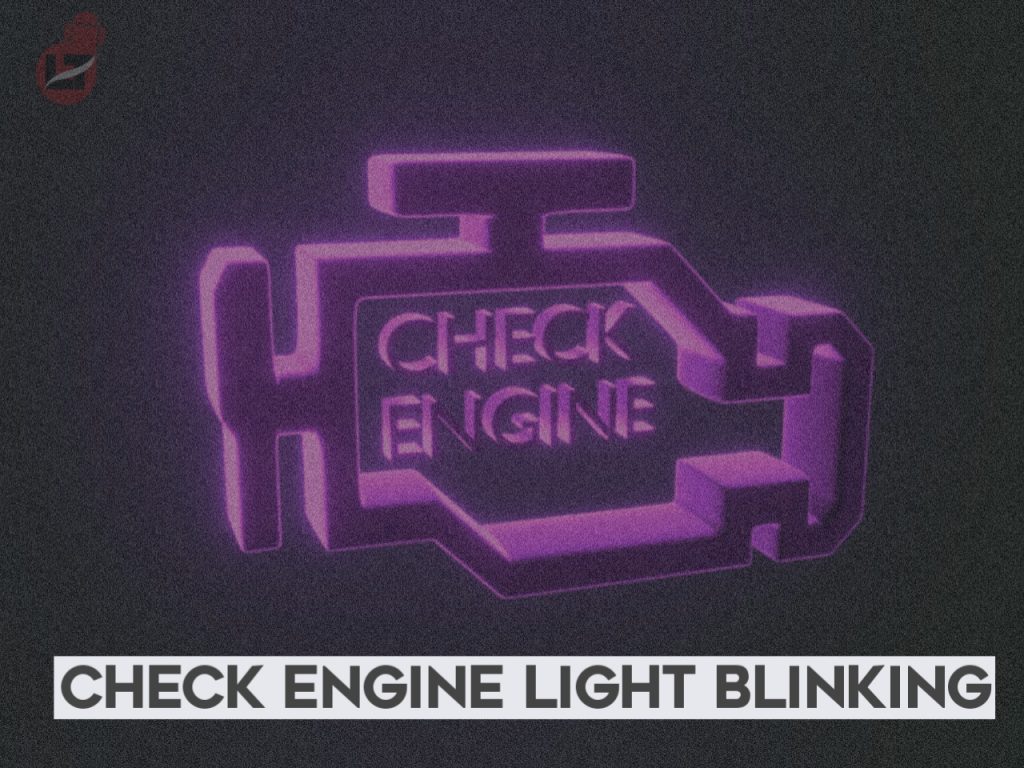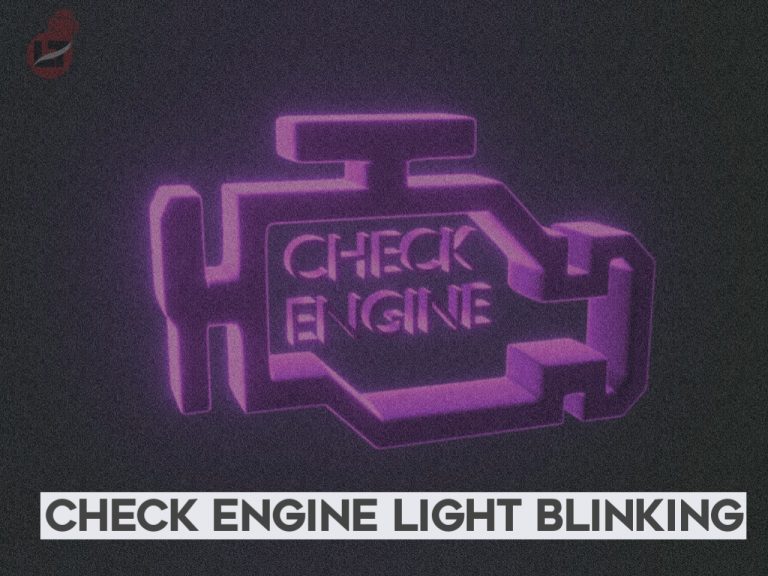Is your check engine light blinking? Please continue reading to find out why and how to repair it.
The check engine light usually turns on to notify the driver that the PCM has noticed and recorded a trouble code on one of the car components.
However, what could it mean when your check engine light starts Blinking or flashing instead of remaining still? Continue reading to find out.

Some of the recorded diagnostic trouble codes usually resolve automatically after some time; others require you to make a few adjustments to the car, while some complex faults require the service of a mechanic.
A blinking check engine light denotes a higher risk issue than a stable check engine light. It usually means an issue in the combustion process, accompanied by engine misfire and clogging of unburnt gasoline.
This chaotic process, in turn, increases the temperature of the catalytic converter, which has a high potential of causing damage if not addressed on time.
I’ll advise car owners to treat a blinking check engine light as urgent by turning off the engine and calling the attention of a mechanic.
Also, there might be times when the check engine light will blink for some time and then stop, even though this doesn’t require immediate attention; if possible, visit an auto repair shop.
In this article, I’ll explain the possible reasons your check engine light is blinking and how to read and stop the flashing.
Why is My Check Engine Light Blinking/Flashing?
Since the primary function of the engine light is to detect and report the malfunction of car components, there’s no way to outright notice why an engine light is blinking, except you scan for error codes using an OBD-II scanner.
However, your check engine light commonly comes on if your gas runs low or the fuel cap is left open.
Outlined below are the reasons why your check engine light will start flashing.
- Issues in the spark plugs
- Problematic Ignition Wires
- Trouble in the fuel system
- An issue in the timing belt
- Faults in the Cylinder Heads
- Low oil or fluids
- Trouble in the piston and rings
- A problem in the cooling and heating system
- Faulty coils, etc.
The above list implies that a bit of fault in any vehicle component can turn the check engine light on.
However, a blinking check engine light denotes emergency trouble that needs an immediate fix because, in some cases, your car might start shaking alongside it.
In the following headline, we’ll see how to fix a flashing check engine light.
Check Engine Light Blinking – Diagnose, Repair & Fix
Once your car starts shaking with the check engine light blinking, the best thing to do is turn off the engine and run a scan on your car using the OBD-II scanner.
Although there are times when the engine light will flash for some time and stop by itself, in this case, I’ll advise you to follow the below procedure to be on the safer side.
An OBD-II scanner is a tool used to detect trouble codes stored by a car’s PCM. It helps you be specific while making repairs.
Without wasting much time, follow the steps below to learn why your car is blinking and repair it.
- Find a safe and excellent spot to park your car and let it cool off.
- Get an OBD-II trouble code scanner – Purchase one from Amazon
- Connect the OBD-II scanner to the OBD port right beneath the driver’s side.
- Turn the ignition key to “ON” to power up the OBD-II scanner (no need to crank the engine.)
- Input the required vehicle information, e.g. VIN.
- Navigate to the menu on the OBD-II scanner to check for logged codes and diagnoses.
- Lookup the logged trouble code on Google search for possible fixes, codes starting with P represents issues in the Power train, B represents faults in the car Body, C represents a problem in the Chassis, and U stands for Undefined codes.
- Implement the recommended repairs and reset the check engine light.
Our site has an error code section where we’ve discussed diagnostic trouble codes and their fixes; you can check for fixes to your logged codes there.
Another beauty that comes with the OBD-II scanner is its ability to instantly clear trouble codes after you’ve implemented the fixes.
So, If you’ve implemented the fix and the check engine light is still turned on, reconnect your scanner and click on the reset button on the menu.
An alternative for resetting the check engine light is disconnecting and reconnecting the vehicle’s battery.
Wrapping UP
A flashing check engine light calls for urgent attention, especially if your car starts shaking and vibrating.
The best thing to do is use an OBD-II scanner while your car is parked to determine why your check engine light is blinking.
We’ve also discussed possible reasons your check engine light will start flashing.
How helpful was this post?
Also, Read > How Long Can You Drive with Check Engine Light ON?
As an Amazon Service LLC Program Associate, V. Auto Basics earns from qualifying purchases. See Our Affiliate disclaimer.
